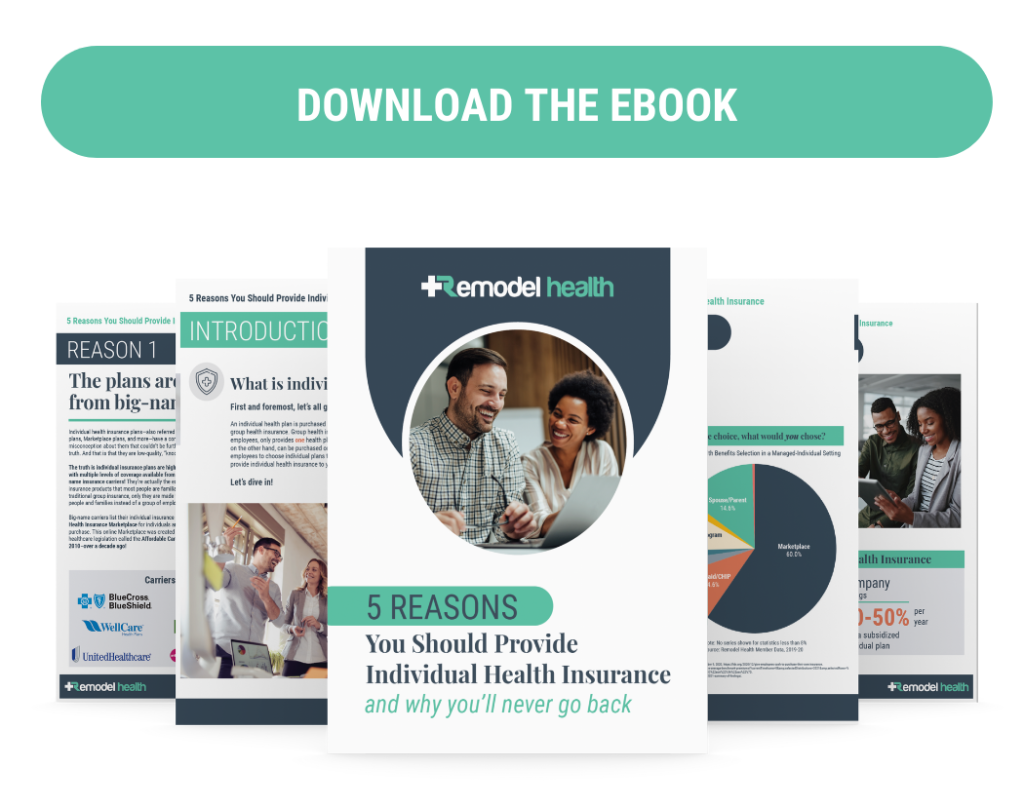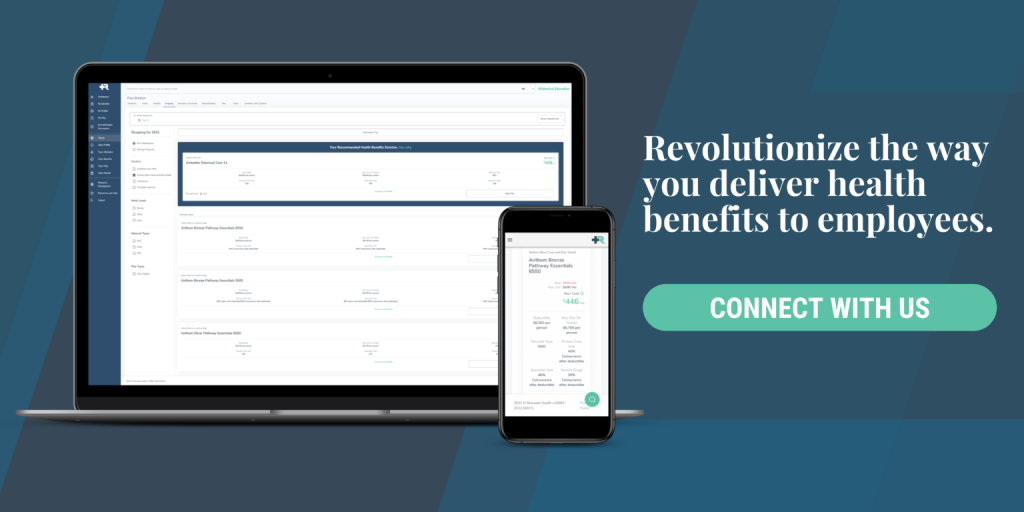When making decisions, we often just look at the numbers instead of the real people they impact. It could even be said that the best leaders are the ones who can actually make hard decisions for their organization’s health without fixating on all the personal repercussions. After all, if you make decisions based on one person that then negatively impacts the rest of the team, this quickly devolves into poor leadership. That being said, what if you could have the best of both worlds? When it comes to health insurance, what if you could care for your people well with strong, individualized protection and coverage while still finding savings that make a tremendously positive impact for the organization? This is possible with The ARPA!
What is “The American Rescue Plan Act (ARPA)”?
The American Rescue Plan Act of 2021, also called “The ARPA”, was the third Covid-19 relief stimulus bill passed by Congress and signed into law by President Biden on Thursday, March 11, 2021.
If you’ve read any of our recent blogs, the best of both worlds is possible now because of the ARPA. Discounts on individual health plans have doubled. As a result, millions of more people qualify for new discounts they didn’t get before because of income thresholds. Huge savings (without losing coverage) are available to employers who transition away from traditional group into managed individual.
These numbers are real, and have huge implications! But for today, let’s get back to the people. Here are four real-life stories about how the ARPA helps with health insurance for employers and employees alike.
1. Single Person Starting Up
The first real-life scenario we’ll look at is the young single professional pursuing a start-up company. They’re working hard and pursuing their passion. However, often in these scenarios, health insurance is the last thing they think of for their startup—and even worse, one of the most expensive.
“I’m healthy enough,” they say. “I don’t need to spend money on something I’m not even going to use.” Quite unknowingly—or perhaps just stubbornly—they overlook the fact that the #1 cause of personal bankruptcy is medical expenses.
But there is great news for this individual! The U.S. Department of Health and Human Services has shared that 4 out of 5 people will be able to find some sort of coverage for around $10 per month. Sure, maybe it’s not the ultra-platinum plan. But this individual will no longer be at risk for bankruptcy because of medical bills thanks to The ARPA!
2. Younger Family of 4
Let’s transition to our next real-life story, which is the younger family of 4. Both in their mid-30s, the couple makes about $60,000 of total household income. One of the parents is staying at home to take care of their newest little one to offset some of the daycare costs.
They were already insured with a health insurance plan that wasn’t great, but it helped protect them from surprise medical bills that all young parents know well! They were on a middle-of-the-road plan because they didn’t want to leave out any coverages, but couldn’t do much more.
Because of the ARPA, their costs have now dropped by 58% every single month. While they were already receiving discounts (i.e. Advanced Premium Tax Credits (APTCs)), the new law actually made it so their costs were literally cut in half.
In terms of dollars, it means that their plan dropped by $151 per month—which means their income increased by 3%. These savings not only help with the expenses of their newest kiddo, but it also means their family stays covered for an even cheaper price than before!

3. Empty Nesters in their 60s
The next real-life story is the empty nest couple. While they’re excited for this next chapter of life, it comes with some drawbacks. Their youngest kid just moved away—moving off of their annual IRS 1040—so they no longer have the same dependents they used to have. As a result, their Federal Poverty Level (which is based on income and household size) just changed dramatically… as well as the cost of their premium. Overnight, they lost all of their APTC discounts by crossing the infamous 400% FPL subsidy cliff.
That is, until the ARPA helped to fix this “subsidy cliff.” Before, someone who made just $3,000 more than the 400% line would end up having to pay $3,000 more in premiums because of how the discounts were calculated against the FPL.
Now, thanks to ARPA, discounts are available to everyone—no matter what their income might be!
Savings like these are substantial, and as an empty nest couple in their 60s, they’re tremendously helpful for retirement. These new subsidies took their costs from $1,920 down to just $531 per month! That is an annual savings of $16,668!
Do you know what $15,000 over the next 5 years with an average compound interest of 10% equals? An additional $100,000 in the bank toward retirement!
4. Struggling Mid-Sized Organization
Our last real-life example is a struggling mid-sized organization. The data shows that on average, groups from 5 to 49 have been consistently hit the hardest year after year by annual rate increases of upwards of 7%.
Any group seeing renewals of 7% over the past 11 years means they’re spending twice as much as they used to (a 210% increase)! We wouldn’t accept these numbers from any other area of our budget, so why do we allow it with our health benefits?
The mid-sized company in our example had 25 employees and they were spending about $350,000 per year on traditional group health plans. While company leadership knew this was expensive, they thought it was necessary to recruit and retain.
Individual plans had been on their radar, but because of that nasty “subsidy cliff” only about 9 of them actually got discounts on health insurance, making it a wash as far as the budget goes. That was until the ARPA unlocked new discounts for the team. Now all 25 employees qualify for discounts, which means they now save $147,000 per year.
In one year, they’ve been able to turn the corner. Whereas in the pandemic they thought they may have to shut their doors, they now have found better coverage!
How will you handle your upcoming 18% increase on health insurance?
If you’re spending $350,000 on health insurance today, then I have to ask: do you really have an additional $63,000 ready-to-spend at the end of the year if the renewal season hits you hard?
Now is the time to discover more options so you can serve your employees better. Our team of consultants can provide you with a detailed analysis of everything available to you to make the positive impact your team is waiting for. Reach out to us at [email protected] to get connected today!

Important Notice: Remodel Health does not intend to provide specific insurance, legal, or tax advice. Remodel Health always recommends to consult with your own professional representation to properly evaluate the information presented and its appropriate application to your particular situation.
